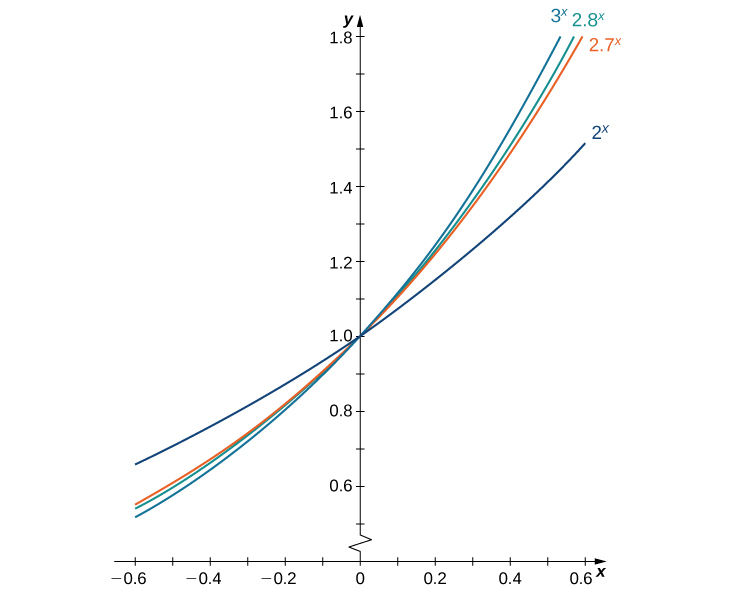| << Chapter < Page | Chapter >> Page > |
So far, we have learned how to differentiate a variety of functions, including trigonometric, inverse, and implicit functions. In this section, we explore derivatives of exponential and logarithmic functions. As we discussed in Introduction to Functions and Graphs , exponential functions play an important role in modeling population growth and the decay of radioactive materials. Logarithmic functions can help rescale large quantities and are particularly helpful for rewriting complicated expressions.
Just as when we found the derivatives of other functions, we can find the derivatives of exponential and logarithmic functions using formulas. As we develop these formulas, we need to make certain basic assumptions. The proofs that these assumptions hold are beyond the scope of this course.
First of all, we begin with the assumption that the function is defined for every real number and is continuous. In previous courses, the values of exponential functions for all rational numbers were defined—beginning with the definition of where is a positive integer—as the product of multiplied by itself times. Later, we defined for a positive integer and for positive integers and These definitions leave open the question of the value of where is an arbitrary real number. By assuming the continuity of we may interpret as where the values of as we take the limit are rational. For example, we may view as the number satisfying
As we see in the following table,
| 64 | 77.8802710486 | ||
| 73.5166947198 | 77.8810268071 | ||
| 77.7084726013 | 77.9242251944 | ||
| 77.8162741237 | 78.7932424541 | ||
| 77.8702309526 | 84.4485062895 | ||
| 77.8799471543 | 256 |
We also assume that for the value of the derivative exists. In this section, we show that by making this one additional assumption, it is possible to prove that the function is differentiable everywhere.
We make one final assumption: that there is a unique value of for which We define to be this unique value, as we did in Introduction to Functions and Graphs . [link] provides graphs of the functions and A visual estimate of the slopes of the tangent lines to these functions at 0 provides evidence that the value of e lies somewhere between 2.7 and 2.8. The function is called the natural exponential function . Its inverse, is called the natural logarithmic function .

For a better estimate of we may construct a table of estimates of for functions of the form Before doing this, recall that
for values of very close to zero. For our estimates, we choose and to obtain the estimate

Notification Switch
Would you like to follow the 'Calculus volume 1' conversation and receive update notifications?